The Battle of Verdun in 1916 was one of the most brutal and prolonged conflicts of World War I, etching its place in history as a grim testament to the horrors of modern warfare. Over 300 days, millions of French and German soldiers clashed in a small, strategic region of northeastern France, resulting in immense casualties and unimaginable suffering. Today, the Verdun battlefield stands as a solemn memorial, its sites like the Colonel Driant Command Post and the Douaumont Ossuary bearing witness to the sacrifices made. Delve further to uncover the full extent of the battle’s devastating impact and the lasting mark it left on the landscape and collective memory.
Just The Basics
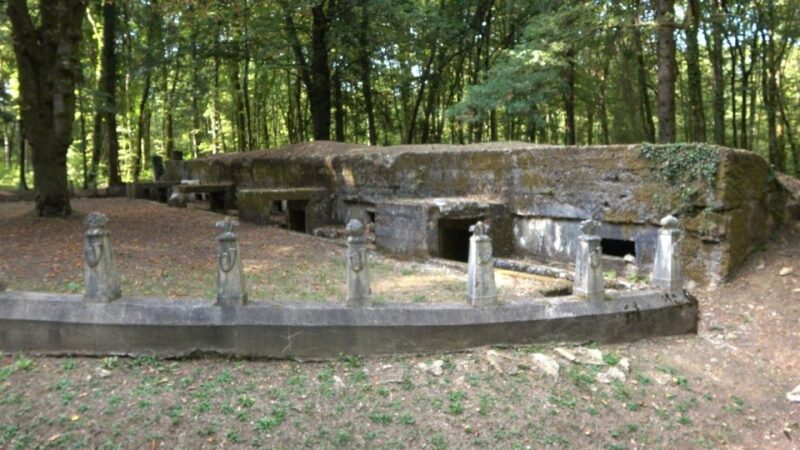
- The Battle of Verdun in 1916 was one of the most brutal engagements of World War I, with millions of French and German soldiers clashing over a small, strategic region.
- The Douaumont Ossuary, a solemn monument, honors the over 130,000 unidentified French and German soldiers who perished in the battle, highlighting the immense human toll.
- The Bayonet Trench monument serves as a symbolic reminder of the intense close-quarters combat that occurred, providing a visceral connection to the horrors of Verdun.
- The Douaumont Fortress and the Casemate’s underground tunnels and chambers offer a tangible connection to the scale and intensity of the conflict, showcasing the resourcefulness and resilience of the soldiers.
- The strategic importance of the Fort of Froideterre and its well-preserved features highlight the challenges faced by the defending soldiers in the ‘Hell of the Battle’ at Verdun.
Verdun’s Historic Battlefield
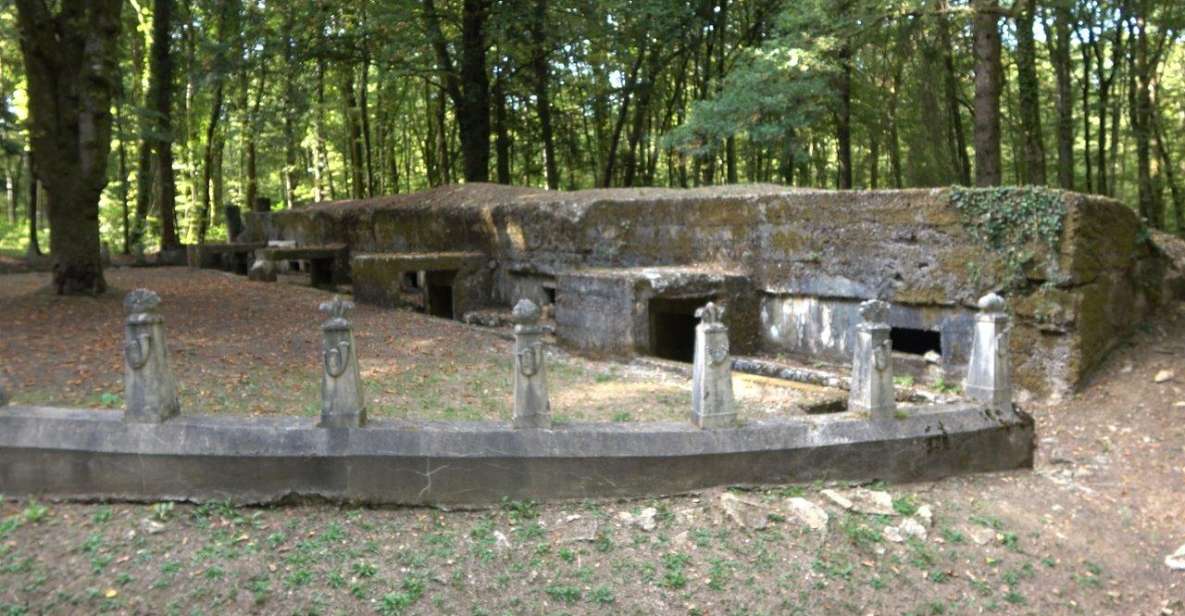
The Battle of Verdun, which raged on for nearly ten months in 1916, is widely regarded as one of the most brutal and hard-fought engagements of World War I, with millions of soldiers from both the French and German armies clashing over a small, strategic region in northeastern France.
This historic battlefield, now a solemn memorial, bears witness to the immense sacrifices made by the combatants. Visitors can explore the Colonel Driant Command Post, where the initial offensive began, and pay their respects at the Douaumont Ossuary, which honors the French and German soldiers who perished in the gruesome battle.
The Bayonet trench monument and the former Village of Fleury serve as haunting reminders of the ferocity and devastation that unfolded on this hallowed ground.
You can also read our reviews of more tours and experiences in Verdun.
Witnessing the Offensive’s Start
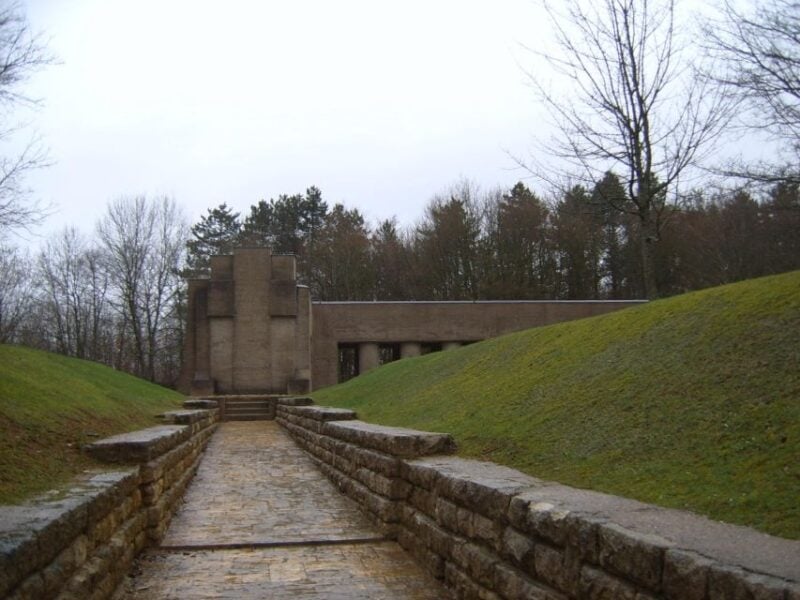
Visitors can explore the Colonel Driant Command Post, where the initial offensive of the Battle of Verdun began in 1916.
This site offers a glimpse into the start of one of the most brutal and prolonged engagements of World War I, as French and German forces clashed over a strategic region in northeastern France.
Here, Colonel Émilete Driant directed the French defense against the German onslaught on February 21, 1916. Though Driant was killed early in the battle, his efforts to delay the German advance bought precious time for French reinforcements.
Touring the well-preserved command post allows visitors to picture the chaos and horrors that erupted as the Battle of Verdun transformed this unassuming spot into a crucible of unimaginable carnage.
Honouring the Fallen Soldiers
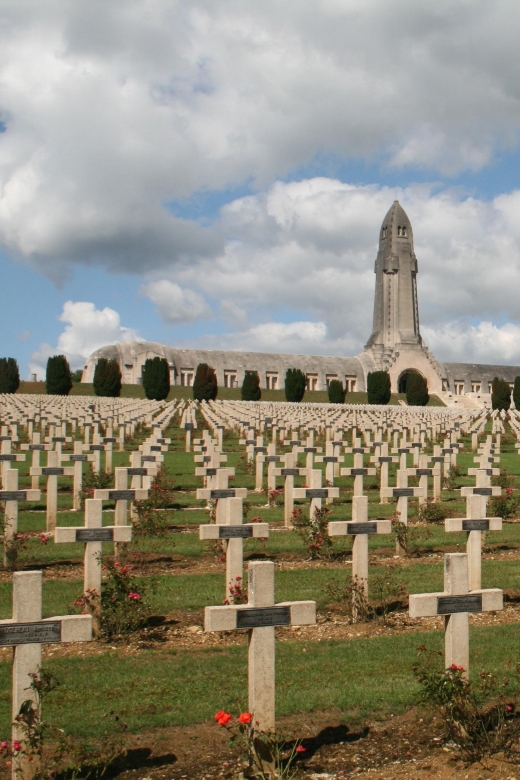
A poignant stop on the tour is the Douaumont Ossuary, which stands as a solemn monument honoring the French and German soldiers who perished during the Battle of Verdun.
Visitors can pay their respects at the crypt containing the remains of over 130,000 unidentified soldiers.
The tour also includes a visit to the Bayonet trench monument, a symbolic reminder of the intense close-quarters combat that defined much of the battle.
These memorials provide a sobering glimpse into the tremendous human toll exacted by the grueling battle, reminding us of the immense sacrifices made by the soldiers on both sides.
Honoring their memory is a crucial part of understanding the profound impact of the Battle of Verdun.
Exploring the Bayonet Trench
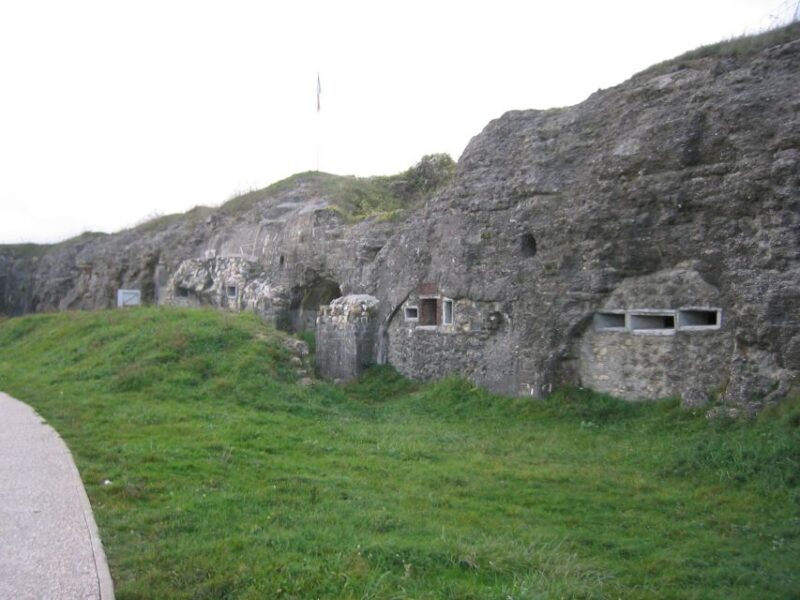
One of the tour’s poignant stops is the Bayonet trench monument, which stands as a symbolic reminder of the intense close-quarters combat that defined much of the Battle of Verdun.
Visitors can explore this historic site and gain a deeper understanding of the brutal nature of the conflict. The trench, which was used by French soldiers, showcases the harsh realities of trench warfare, where soldiers fought fiercely with bayonets in confined spaces.
The monument serves as a sobering tribute to the courage and sacrifice of those who fought and died in this savage battle. Exploring the Bayonet trench provides a powerful and visceral connection to the horrors of Verdun, leaving a lasting impression on all who visit.
More Great Thing To Do NearbyExperiencing Lunch in Verdun

In an article titled ‘Verdun: 1916 Hell of the Battle’, it’s now time to discuss the CURRENT SUBTOPIC ‘Experiencing Lunch in Verdun‘.
After exploring the somber Bayonet trench monument, the tour pauses for a lunch break in the city of Verdun, providing visitors a chance to refuel and reflect on the morning’s poignant experiences.
The lunch stop offers a respite from the heavy subject matter, allowing guests to enjoy the local cuisine in the historic town center.
With its winding streets and old-world charm, Verdun offers a glimpse into the resilience of the French people, who rebuilt their community after the devastating battle.
This midday meal is a welcomed interlude before continuing the tour’s deeper exploration of Verdun’s wartime history.
Observing the Douaumont Fortress

The tour then proceeds to the iconic Douaumont Fortress, an enduring symbol of the Battle of Verdun that offers visitors a glimpse into the immense scale and intensity of the conflict.
Travelers can explore the fort’s exterior, examining its imposing stone walls and strategic hilltop location that made it a critical objective for both French and German forces during the prolonged battle.
The fort’s exterior provides a tangible connection to the past, allowing visitors to envision the fierce fighting that took place within its walls.
Uncovering the Casemate’s Secrets
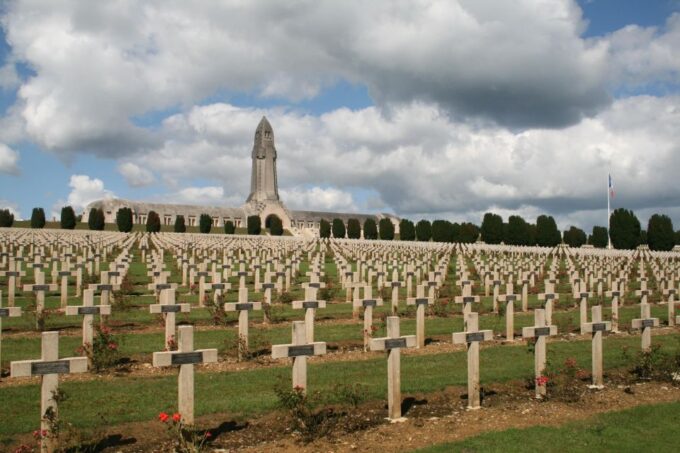
Travelers then venture underground to explore the casemate of Les 4 cheminées, a former German defensive structure that provides a captivating glimpse into the subterranean complexities of the Battle of Verdun.
This expansive network of underground tunnels and chambers offers a stark contrast to the open battlefield above, showcasing the ingenuity and determination of both sides. Visitors can wander through the dark, winding passages, imagining the soldiers who once sought refuge and shelter from the relentless shelling.
The casemate’s well-preserved state allows guests to truly enjoy the historic environment, gaining a deeper understanding of the strategies and sacrifices that defined this legendary conflict. The casemate stands as a powerful testament to the resourcefulness and resilience of those who endured the horrors of Verdun.
Traversing the Froideterre Stronghold

Verdun: 1916 Hell of the Battle
Traversing the Froideterre Stronghold
After exploring the underground casemate, the tour now moves on to the historic Fort of Froideterre, where visitors can traverse the stronghold’s well-preserved structures and gain a deeper understanding of the strategic importance of this fortified position during the Battle of Verdun.
The Fort of Froideterre played a crucial role in the defense of Verdun, with its network of trenches, artillery emplacements, and underground passages providing a formidable obstacle to the advancing German forces.
Visitors can explore the fort’s imposing walls, winding corridors, and well-preserved features, gaining a vivid sense of the immense challenges faced by the soldiers who fought to hold this critical piece of ground.
Frequently Asked Questions
Can I Take Pictures During the Tour?
Yes, you can take pictures during the tour. Photography is generally permitted, allowing you to capture the historical sites and monuments along the way. However, check with your guide for any restrictions at specific locations.
Is the Tour Accessible for People With Disabilities?
The tour appears to have some accessibility for people with disabilities, as it includes private transportation. However, the ability to access certain sites like the Ossuary and Forts may be limited. Visitors should inquire about specific accessibility accommodations when booking.
What Is the Maximum Group Size for This Tour?
The tour’s maximum group size is private, allowing for a personalized experience. Participants can expect an English-speaking French guide and private transportation as part of the comprehensive itinerary.
Do We Have Any Free Time During the Tour?
The tour includes a stop for lunch in Verdun, providing free time for participants to explore the city on their own. The itinerary allows for independent exploration and breaks during the guided tour.
Can I Bring My Own Food and Drinks?
Participants can bring their own food and drinks for the tour. However, bottled water is provided in the vehicle. Any personal expenses, such as snacks or meals, are not included in the tour price.
Final Words
The Battle of Verdun stands as a sobering reminder of the unimaginable sacrifices and horrors of World War I.
The battlefield’s memorials and fortifications offer a profound glimpse into the devastation that unfolded, inspiring reflection on the immense human cost of war and the enduring legacy of those who perished in its grips.
You can check if your dates are available here: